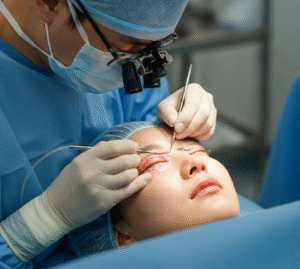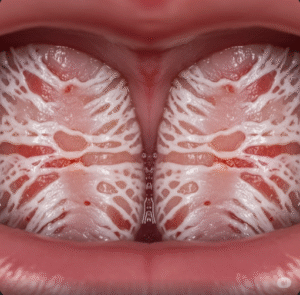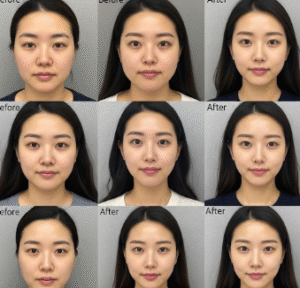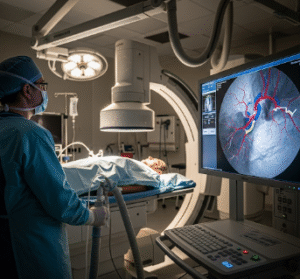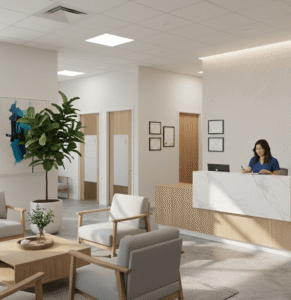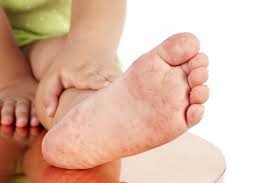Dermal Melanosis Care in Korea focuses on treating pigmentation that lies deeper in the dermis, unlike superficial conditions such as freckles or sun spots. Dermal melanosis includes conditions like Hori’s nevus, Ota’s nevus, and other deep-set pigment disorders, which often present as bluish, gray, or brown patches on the face and body.
These conditions are common in Asian skin types, and Korea—renowned for its leadership in pigmentation management—offers specialized laser treatments, holistic care protocols, and advanced aftercare systems. The country’s dermatology clinics have gained global recognition for their ability to safely and effectively treat dermal melanosis, which can be more challenging than surface-level pigmentation.
What It Is
Dermal melanosis refers to deep pigmentation disorders caused by excessive melanin trapped within the dermis. Unlike epidermal pigmentation (such as freckles), dermal pigmentation appears darker and is more resistant to superficial treatments.
Examples of dermal melanosis include:
- Nevus of Ota – Bluish-gray pigmentation around the eye area.
- Hori’s nevus – Bilateral blue-brown patches on the cheeks.
- Mongolian spots – Common in infants but sometimes persist.
- Post-inflammatory dermal pigmentation – After trauma or inflammation.
In Korea, advanced Q-switched Nd:YAG lasers and Pico lasers are the most common solutions, as they penetrate deep enough to target dermal melanin clusters.
Why It’s Done
Dermal melanosis care is sought in Korea for both medical and cosmetic reasons:
- Medical reasons → Some forms, like Ota’s nevus, may progress or cause psychological distress if untreated.
- Cosmetic improvement → Patients want clear, even-toned skin.
- Cultural ideals → In Korean beauty culture, spotless, bright skin is a highly valued aesthetic standard.
- Confidence and social well-being → Deep pigmentation can cause self-consciousness, especially when present on the face.
Korean dermatology emphasizes safe, gradual improvement rather than aggressive treatments that risk scarring or rebound pigmentation.
Alternatives
If lasers are not suitable, Korean clinics may recommend alternatives:
- Chemical peels → Mild to moderate improvement for surface enhancement.
- Microneedling with brightening ampoules → Helps overall tone but limited effect on deep pigmentation.
- Topical skincare → Whitening agents like hydroquinone, arbutin, and tranexamic acid.
- IPL/BBL photofacials → More effective for epidermal pigmentation than dermal, but sometimes used as supportive care.
- Whitening IV drips → Vitamin C and glutathione therapies for systemic skin brightening.
Preparation
Korean dermatologists emphasize careful preparation before dermal melanosis treatment:
- Consultation → A skin analysis is performed using imaging technology to measure depth and extent of pigmentation.
- Pre-care instructions → Avoid tanning, exfoliants, and harsh skincare for 1–2 weeks before treatment.
- Medical history → Patients must disclose any previous pigmentation issues, keloids, or sensitivity.
- Hydration → Use of moisturizers and sheet masks to ensure the skin barrier is healthy before treatment.
Because dermal melanosis often requires stronger laser energy, numbing cream is typically applied.
How It’s Done
Dermal melanosis treatments in Korea usually last 30–45 minutes per session:
- Cleansing – The treatment area is thoroughly cleansed.
- Numbing cream – Applied for comfort.
- Laser therapy –
- Q-switched Nd:YAG (1064 nm) → Standard treatment for deep pigmentation.
- Pico lasers → Ultra-short pulses break melanin into smaller fragments for faster clearance.
- Multiple passes are performed at controlled fluence levels.
- Post-care – Cooling packs, hydrating serums, and calming masks.
- Final step – Sunscreen is applied before discharge.
Most patients require 5–10 sessions spaced 4–6 weeks apart, as dermal pigmentation responds more slowly than superficial pigmentation.
Recovery
Recovery from dermal melanosis treatments is usually mild but gradual:
- Immediately after → Redness, swelling, or slight darkening of treated spots.
- 3–7 days later → Pigmentation may look darker before it begins to fade.
- 2–4 weeks later → Visible lightening of pigmentation as melanin fragments are cleared.
- Ongoing care → Consistent sunscreen use and gentle skincare are essential.
Korean clinics often accelerate healing with hydration facials, LED therapy, and antioxidant ampoules after each session.
Complications
Dermal melanosis care is safe in Korea, but possible complications include:
- Temporary redness and swelling.
- Mild scabbing or dryness in treated areas.
- Hyperpigmentation or hypopigmentation if aftercare is not followed.
- Rare risk of scarring with overly aggressive treatments.
Korean dermatologists minimize risks by using conservative fluence levels and gradual protocols, ensuring that results are safe and natural.
Treatment Options
Korean clinics offer tailored programs for dermal melanosis:
- Laser spot removal → Q-switched Nd:YAG or Pico laser programs.
- Melanosis care packages → Multi-session treatments with hydration therapy.
- Brightening programs → Combination of lasers with Vitamin C or tranexamic acid infusion.
- Anti-aging + pigmentation packages → Pairing melanosis care with collagen-stimulating treatments.
- Combination therapies → Dermal melanosis laser plus Aqua Peel or Hydrafacial for cleansing and hydration.
Clinics in Seoul, especially in Gangnam, provide affordable multi-session packages designed for long-term results.
Conclusion
Dermal Melanosis Care in Korea is a highly advanced solution for deep-seated pigmentation disorders such as Ota’s nevus, Hori’s nevus, and stubborn post-inflammatory pigmentation. With the use of Q-switched Nd:YAG lasers, Pico lasers, and comprehensive aftercare protocols, Korean dermatology clinics are able to achieve gradual but lasting improvements safely.
Backed by cutting-edge technology, personalized protocols, and the K-beauty philosophy of prevention and natural results, Korea has become one of the best places in the world for treating dermal pigmentation. For patients seeking to restore clarity, radiance, and confidence, dermal melanosis care in Korea offers a proven and trusted path.


